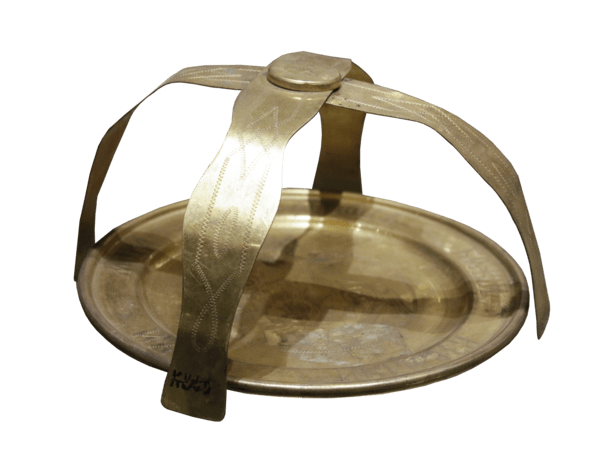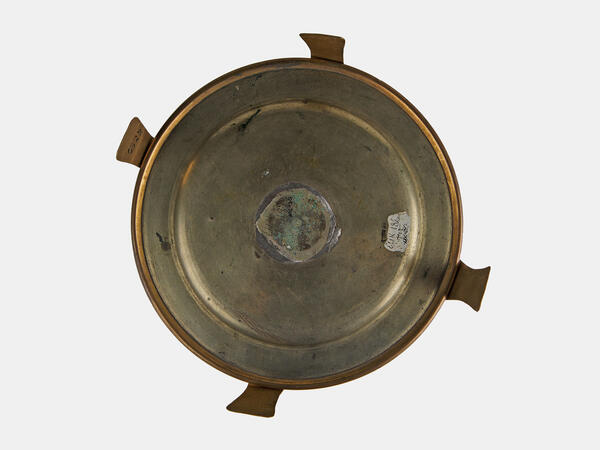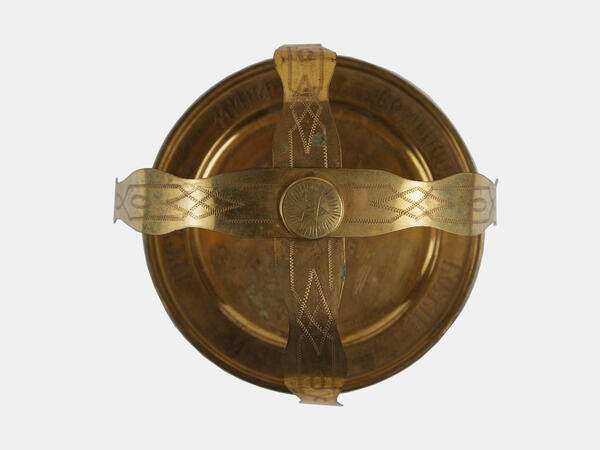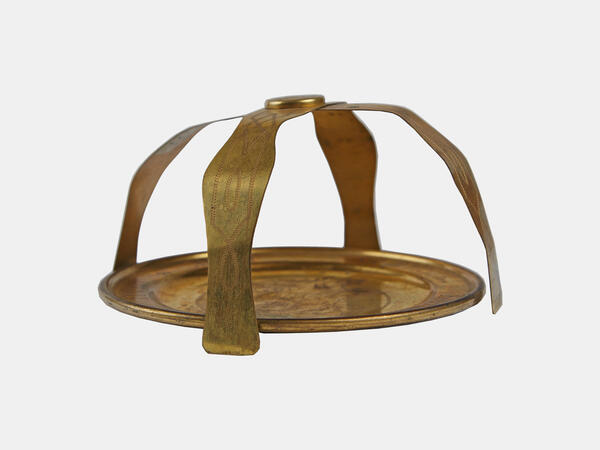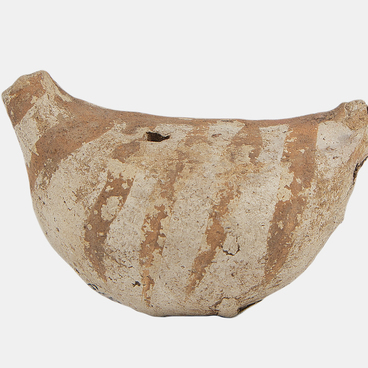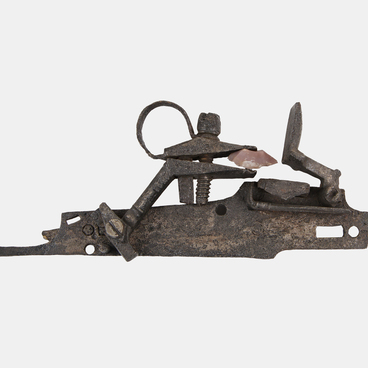An asterisk is one of the church items used in the Divine Liturgy. Its name is translated from Greek and Latin as a “little star.” The asterisk consists of two arched strips of metal that are joined in the center and fold and unfold forming a cross.
The asterisk is placed on the diskos (in ancient times they formed one piece). This is a small metal plate with a stem and base — the diskos that is on display in the museum does not have these parts since they are missing. During the Divine Liturgy, the Lamb — the central portion of bread cut from the prosphora — is placed on the diskos. The asterisk covers it like a canopy, emphasizing the importance of the mystery.
The asterisk symbolizes the Star of Bethlehem, which led the Magi to the Savior and stopped right above the stable where the Son of God was born. The diskos has many meanings, one of them being the manger in which Jesus was laid as a baby.
The diskos can be decorated with images of the Nativity of Christ, the Crucifixion, and angels. The central image is usually engraved, enamel versions are less frequent since no applications are allowed on the surface of the plate. The stem and base can be adorned in any way: with enamel and precious stones, engravings and cast details.
In the early centuries of Russian Orthodoxy, the asterisk had one more meaning, which related to the Old Testament — it was considered a tabernacle, a shelter. The asterisk was called the “canopy, ” that is, the tent of the Holy Spirit. This term can be found in Russian liturgical books of the 13th century. Later, the word “canopy” began to be replaced with the word “asterisk” to bring the meaning closer to the Greek text, in which the consecrated object was called “asteriskos”.
Viewing the asterisk as a tabernacle indicates the mystery that was hidden from people. Only the high priest of the Israeli people could touch it once a year when God spoke to him in the temple. There the priest prayed for all the people and asked the Almighty for mercy. For an Orthodox Christian, the star contains two testaments: the Old and the New. The asterisk also symbolizes Jesus Christ, the true High Priest, who replaced the earthly one, entered the Heavenly Tabernacle and sacrificed Himself for the sins of men.

